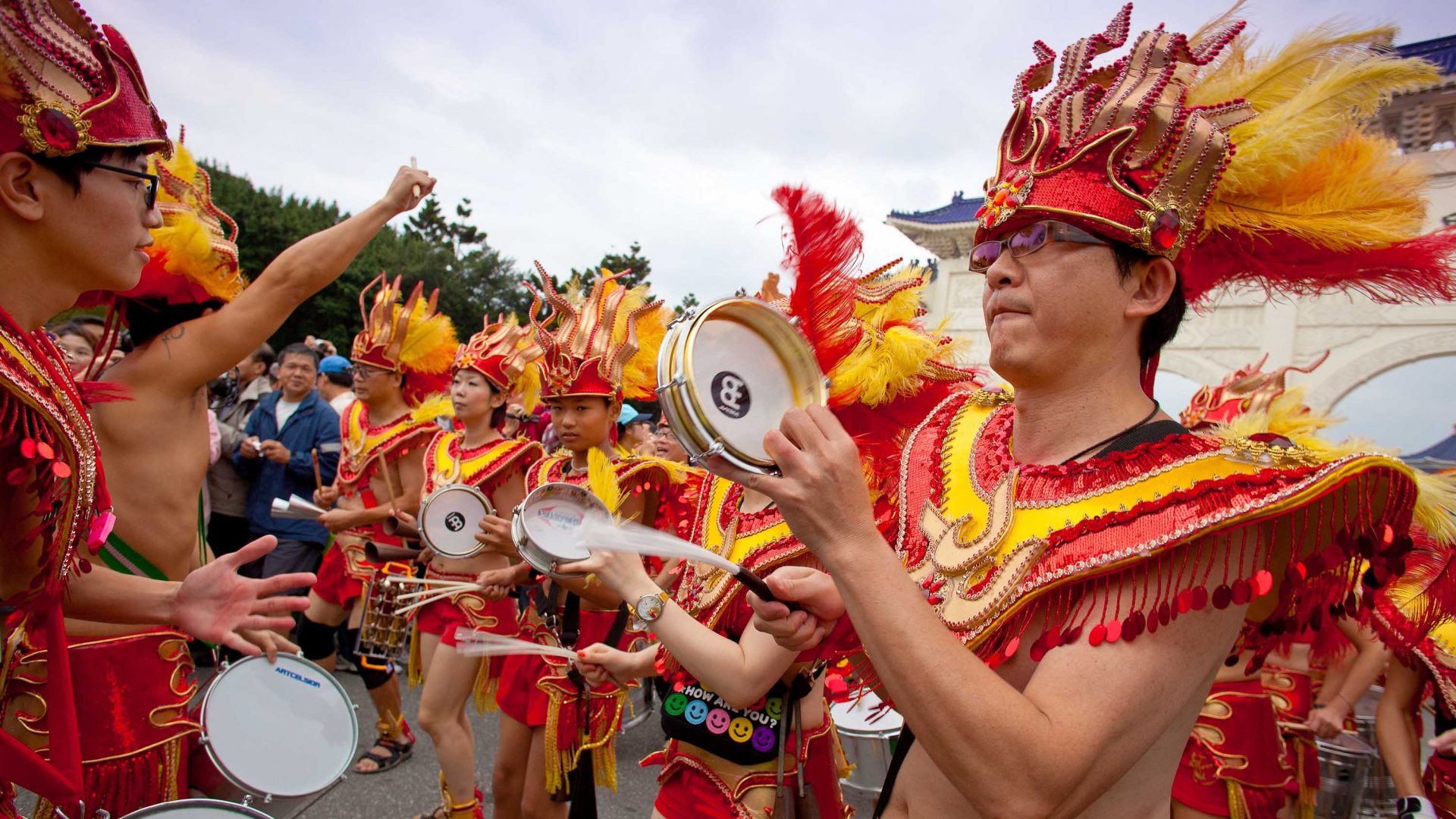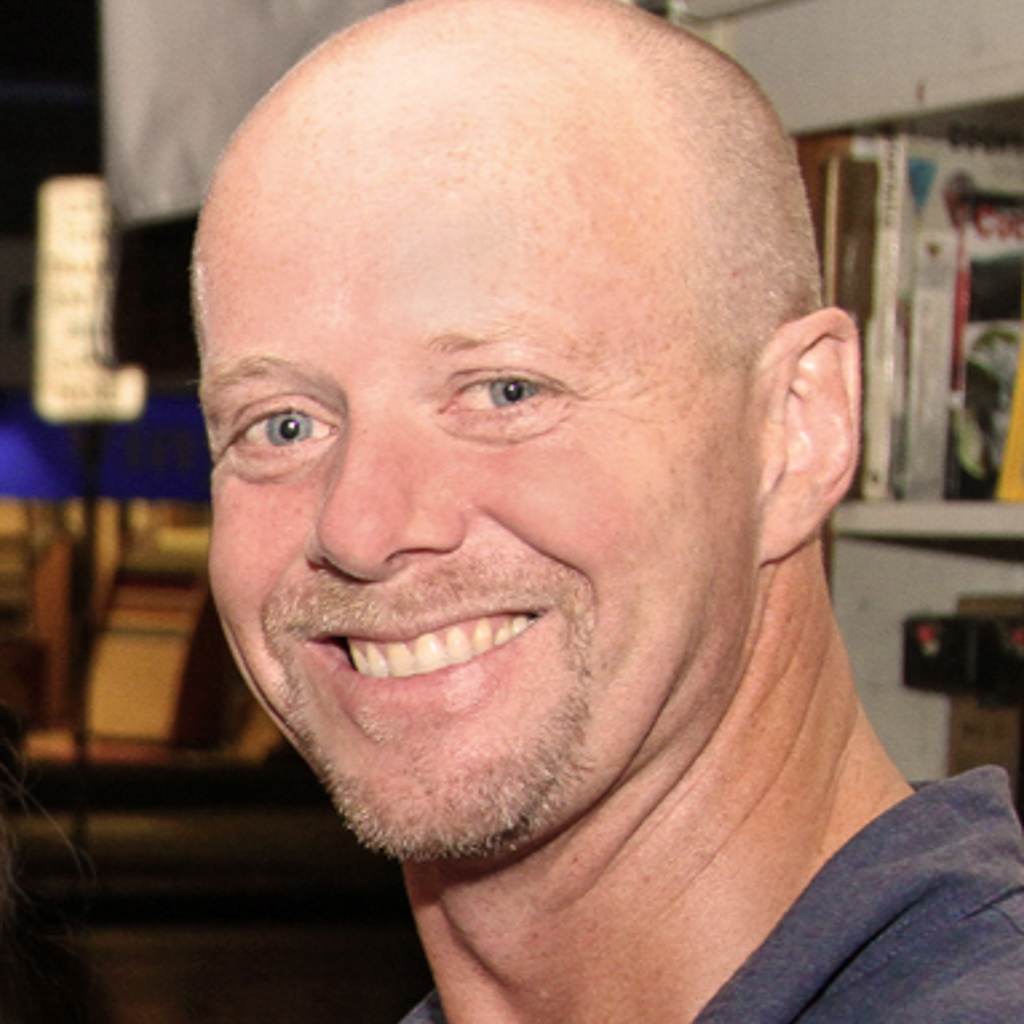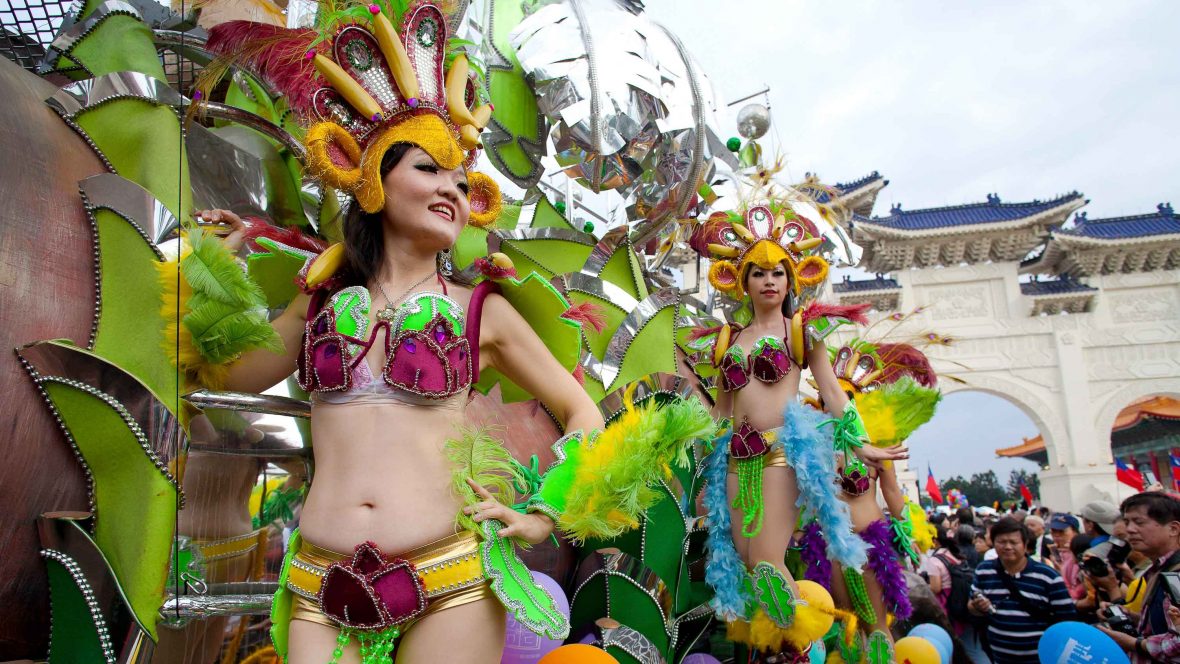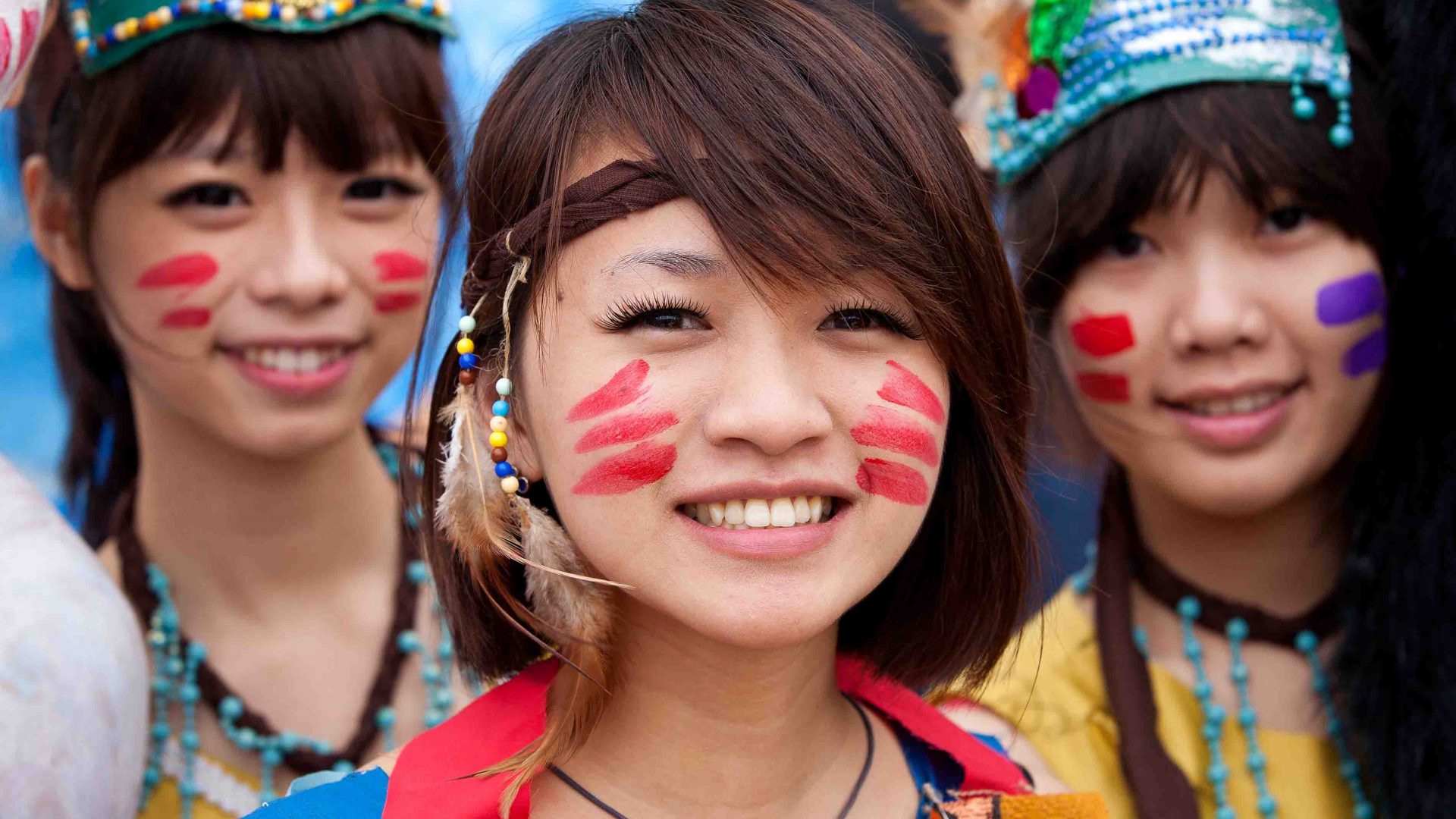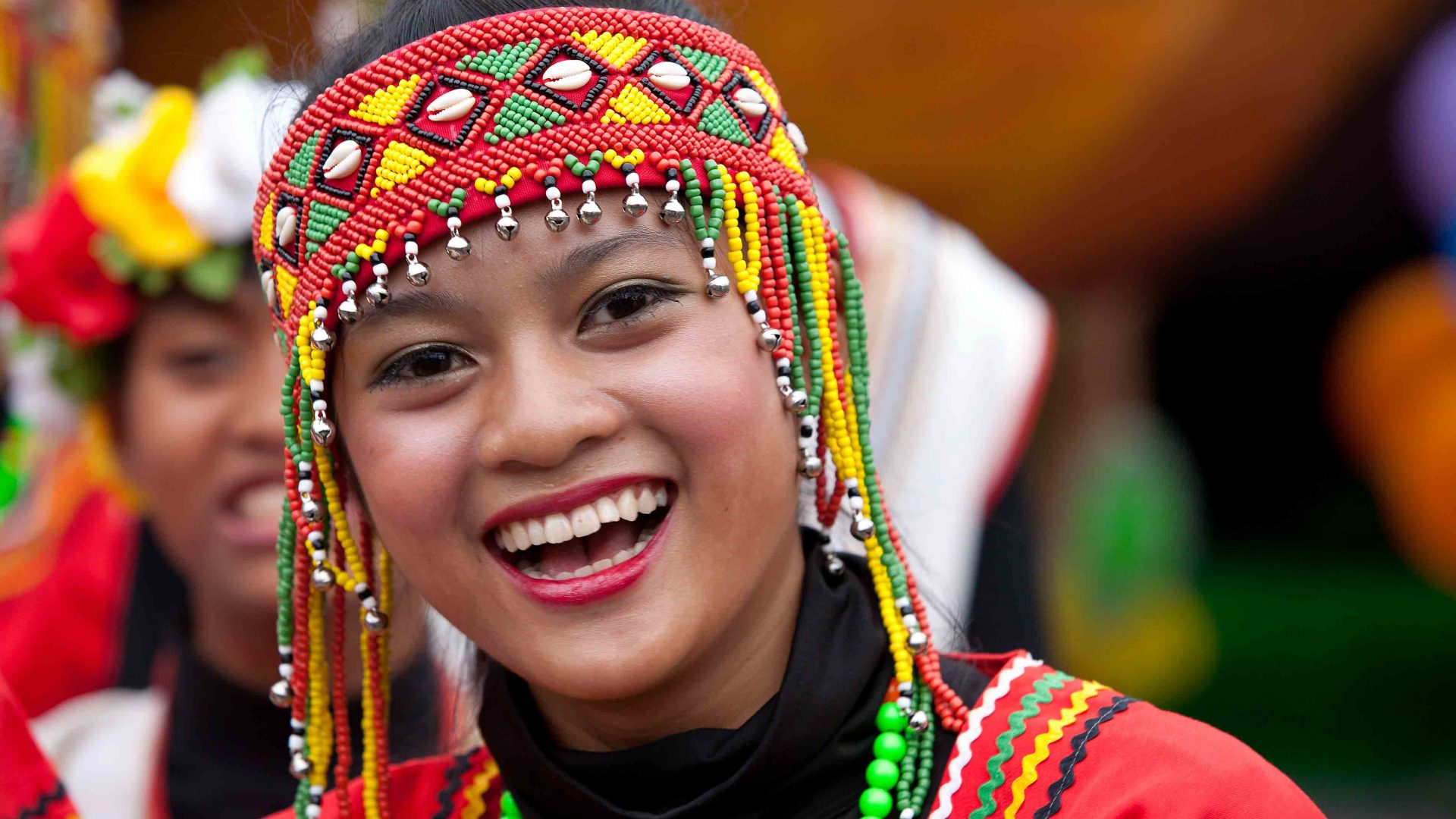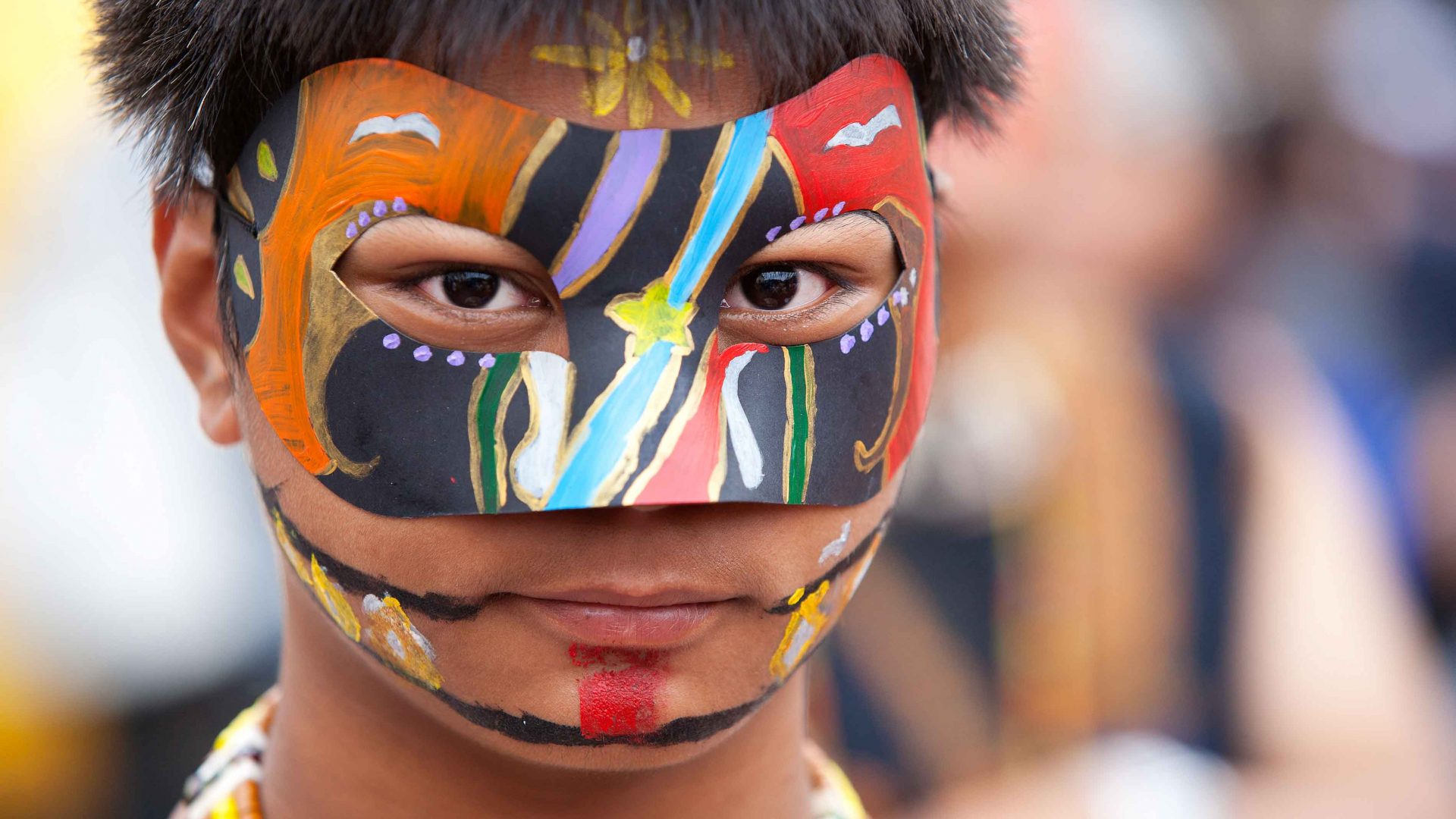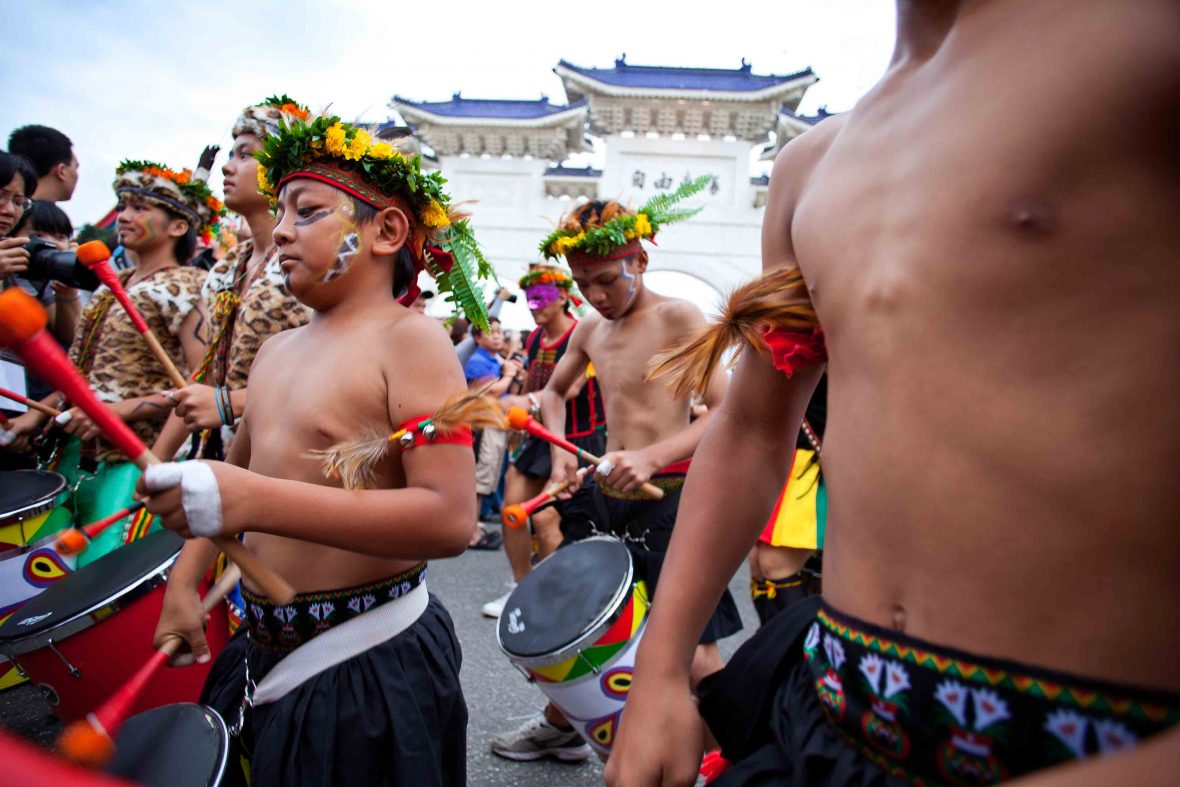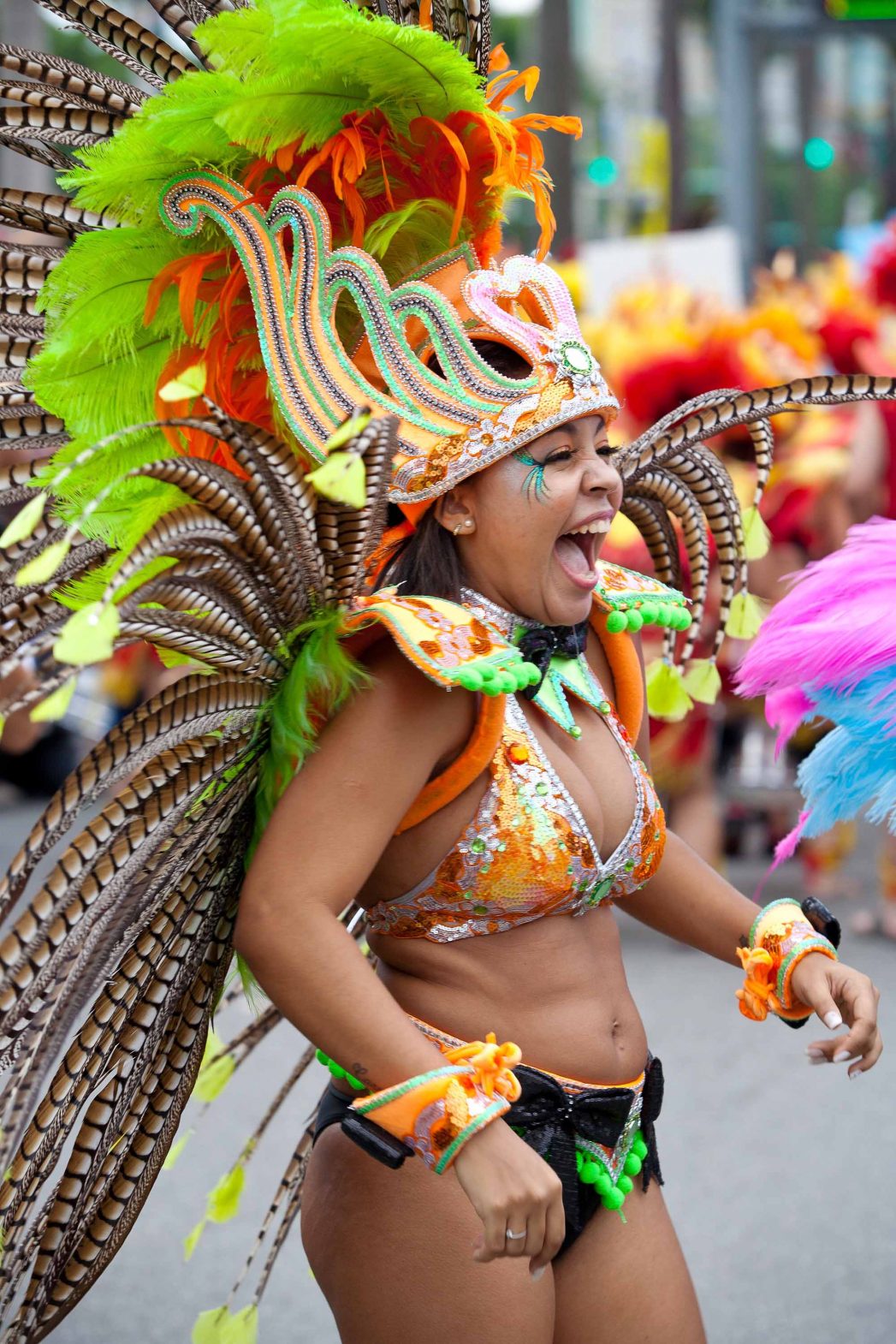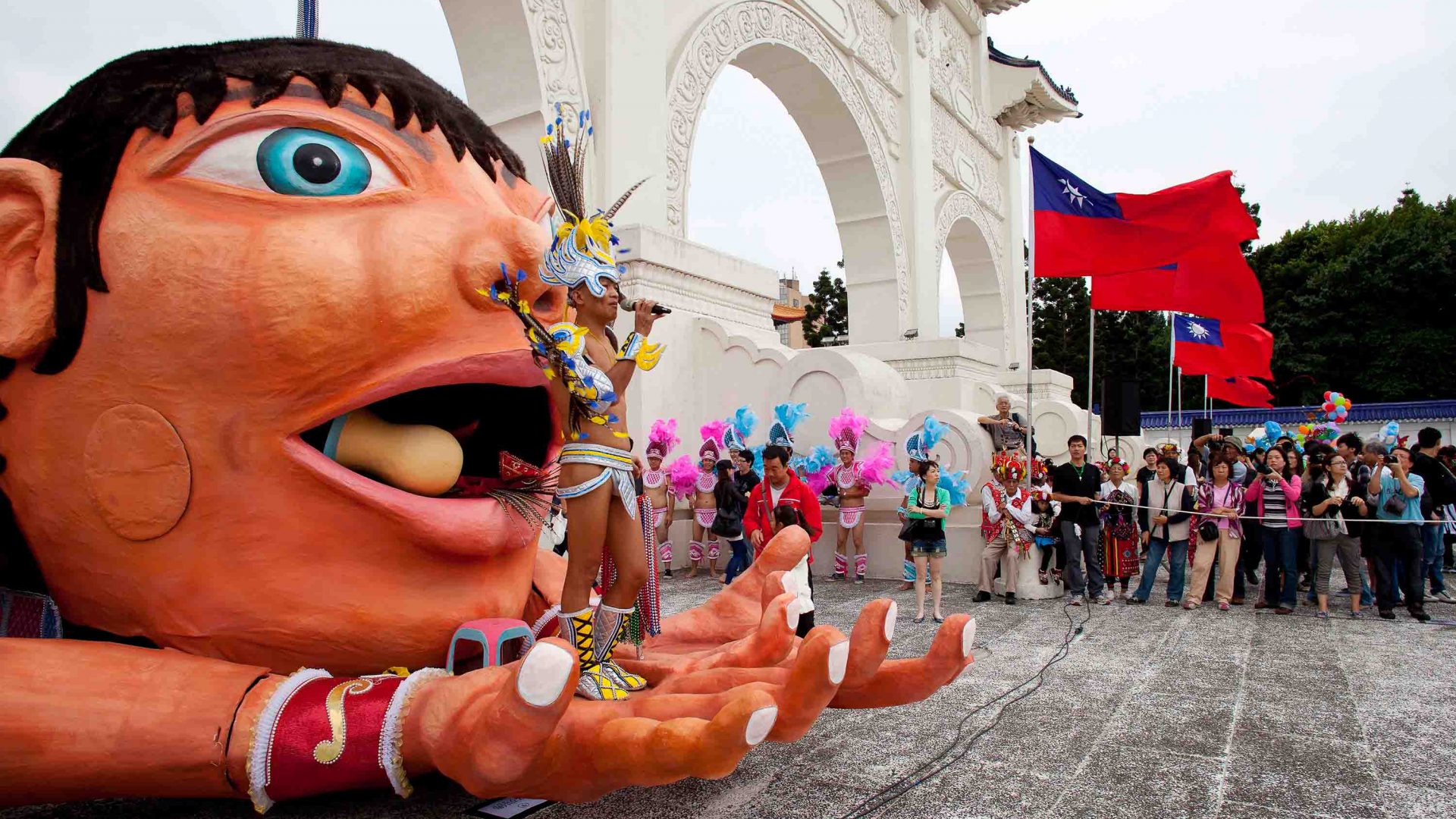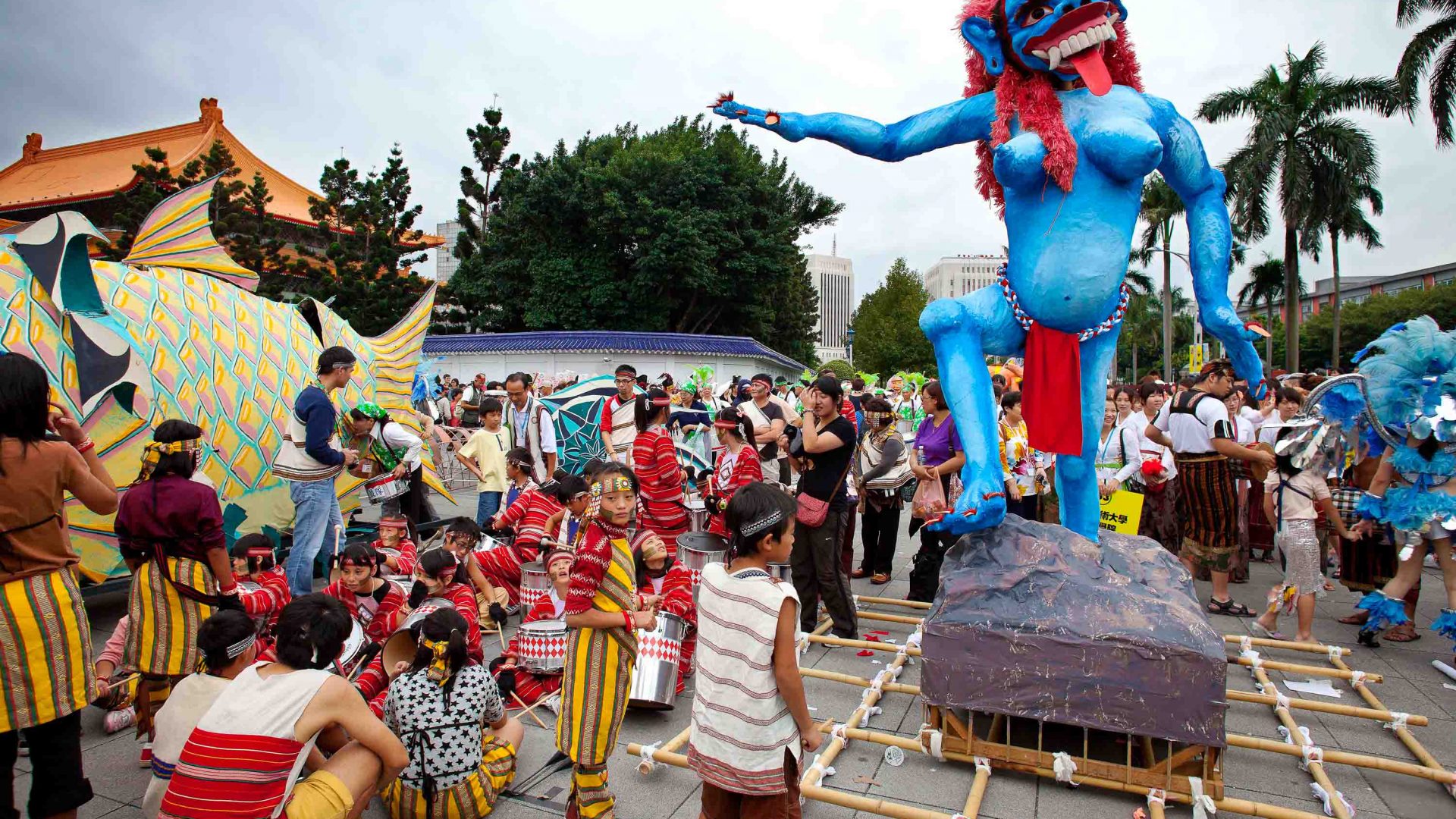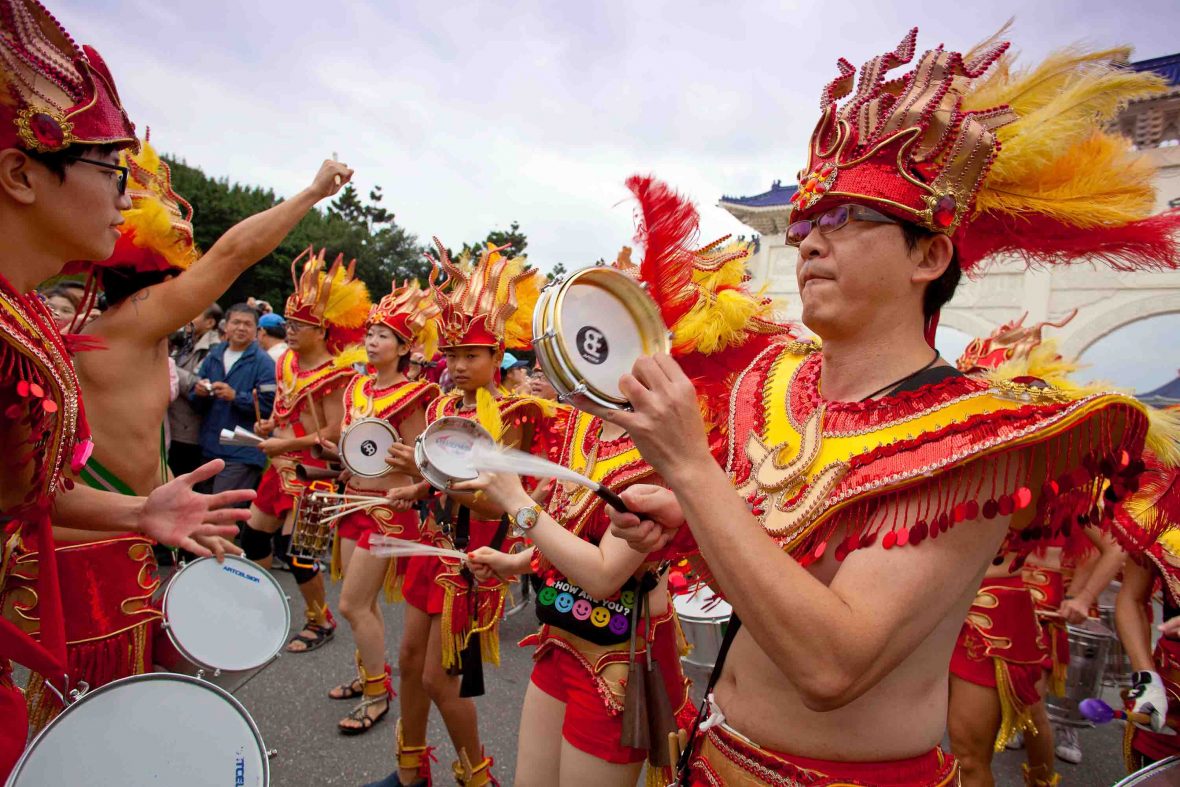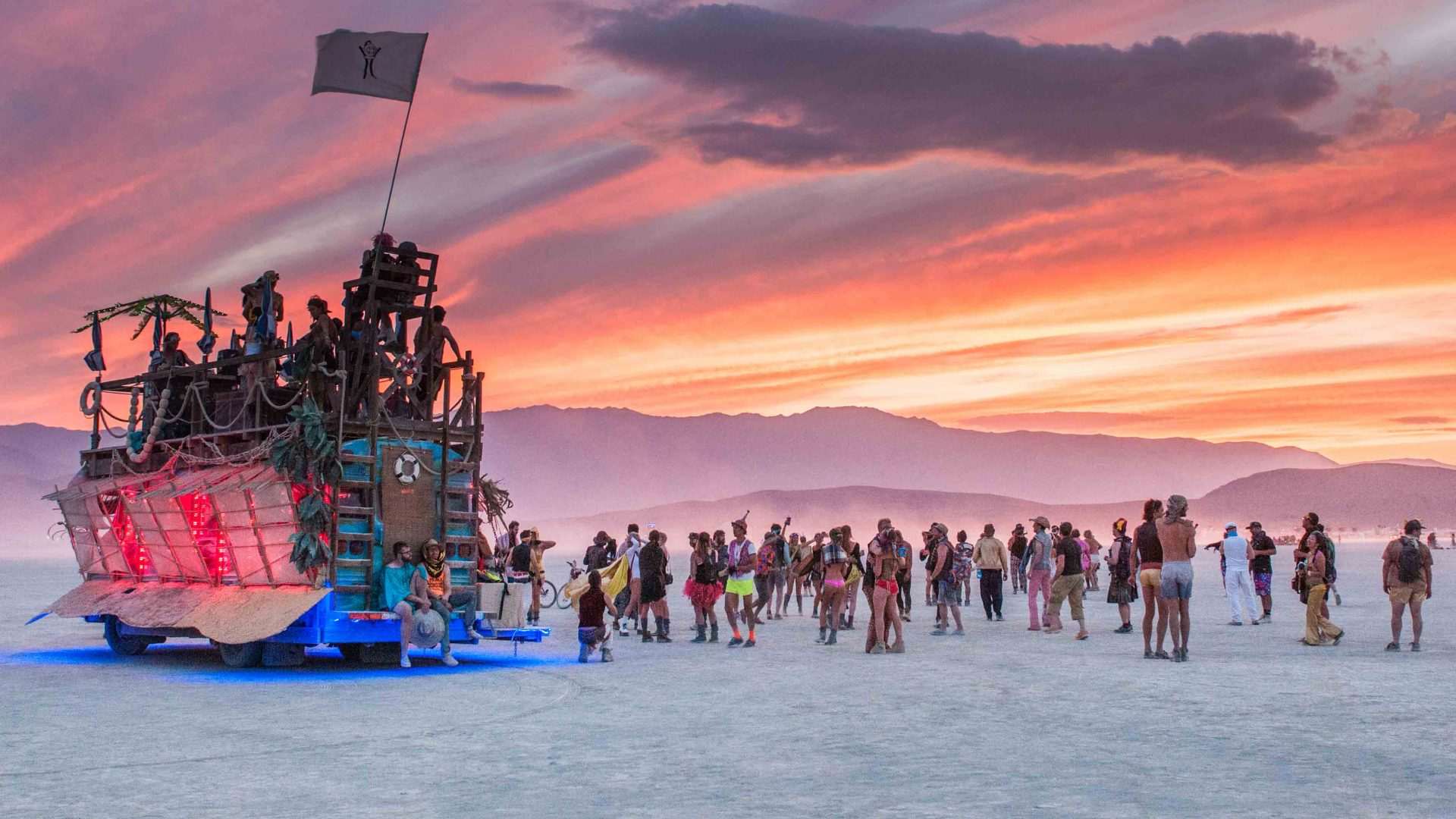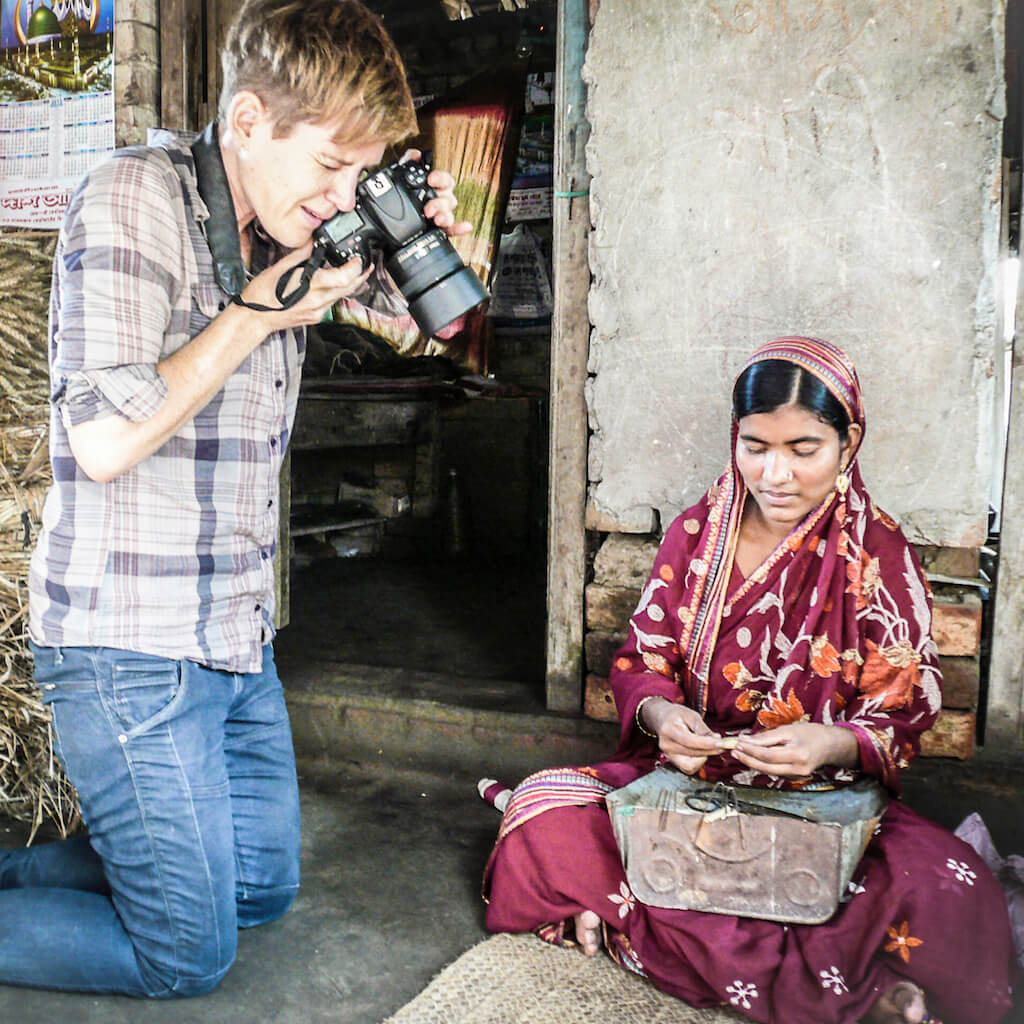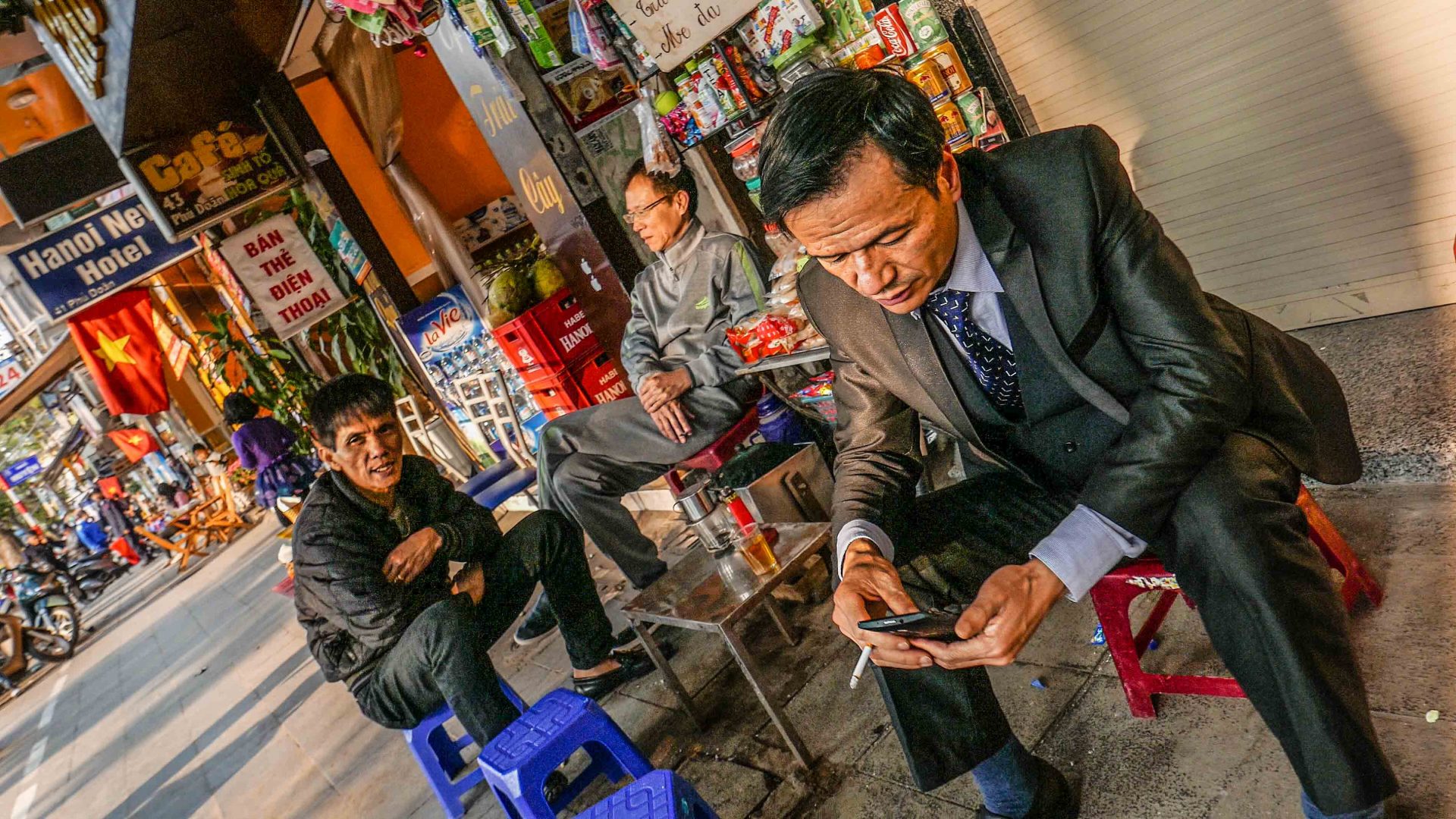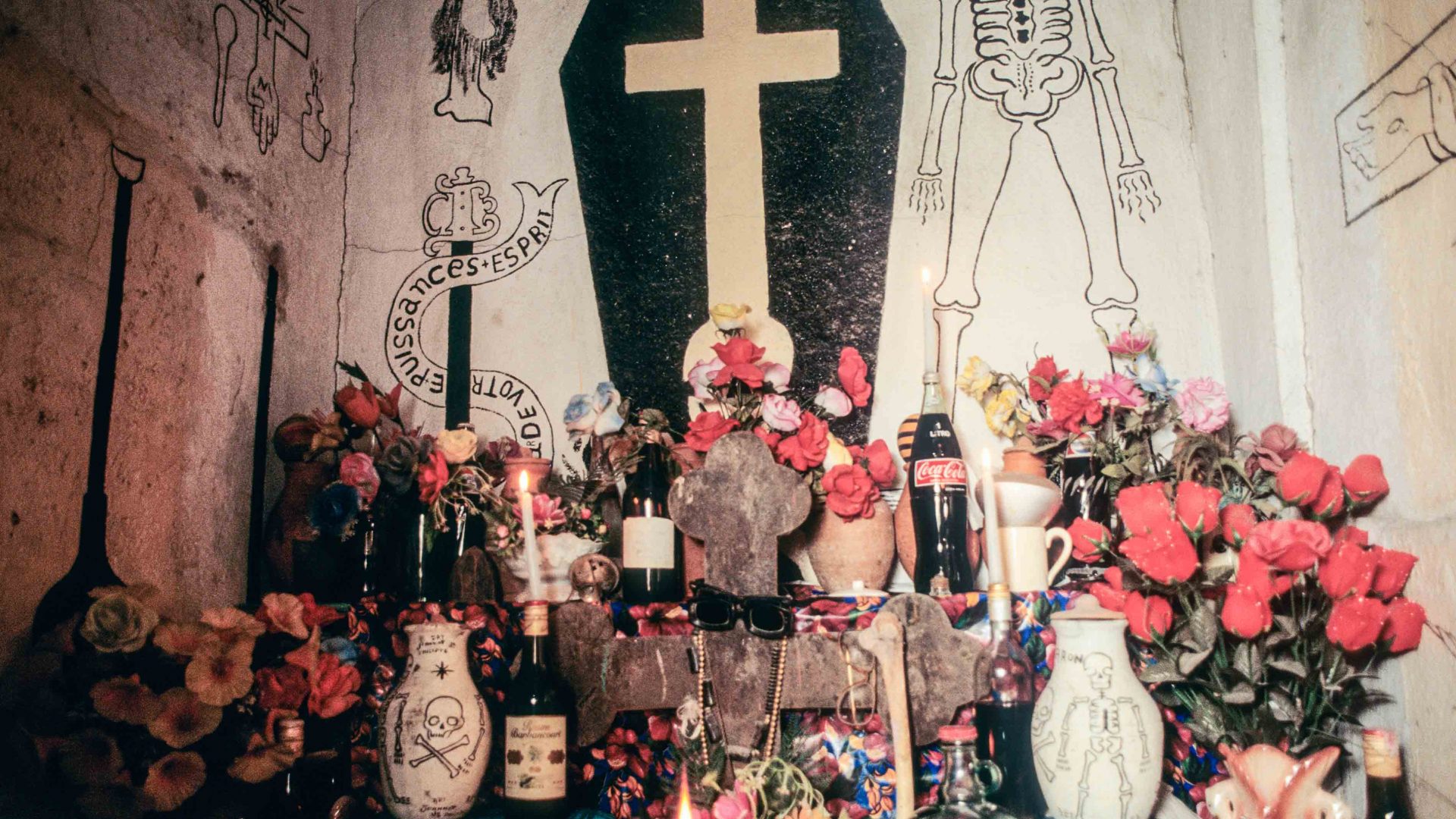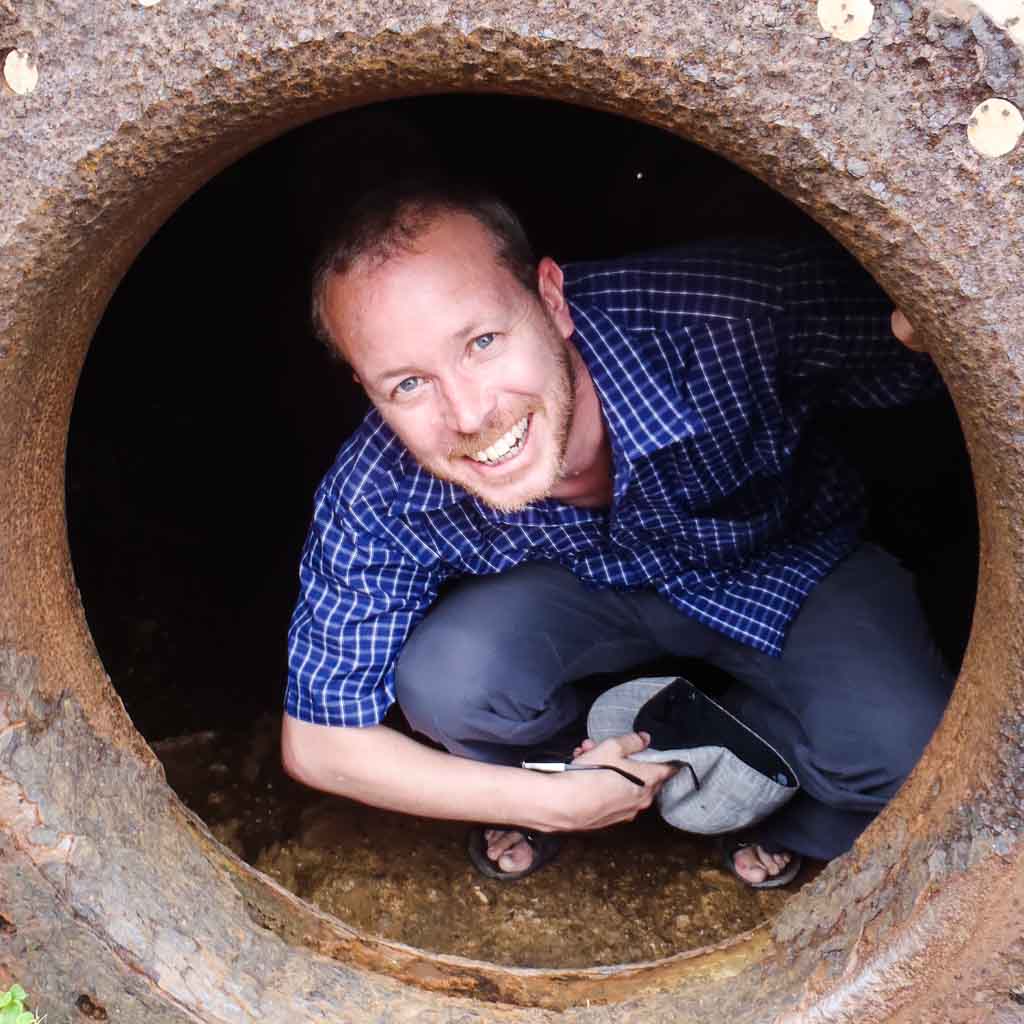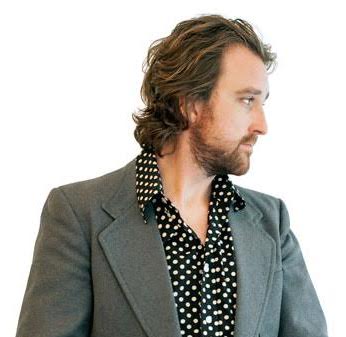Taipei’s annual Dream Parade—a cacophonous riot of color honoring Taiwan’s aboriginal villagers (and funded by a local property magnate)—has been likened to Rio’s Carnivàle and the Mardi Gras in New Orleans. Mark Daffey dives in.
Dressed in guises designed to replicate banana peels, wizened old women turn back the clock with a zestful vigor that belies their years. Bespectacled men, their decorative attire ablaze with what appear to be licks of fire, rattle tambourines while braying rhythmic chants. Latino-looking samba dancers frolic in step with the locals, never missing a beat, each costume as outrageous it is eye-catching. Suffice to say, it’s not your typical Taiwanese scene.
Welcome to Taipei’s Dream Parade, an annual street festival that’s part-musical jamboree, part-dance fiesta and part-fancy dress party, with more than a smattering of beauty pageantry added to the mix.
New Orleans marching bands, Berlin troubadours and Brazilian samba queens have all featured in past years, with many of these ‘celebration artists’ arriving months before the event to prepare and work at the Dream Community, teaching residents puppetry skills, for example, or how to walk on stilts. Often, they’ll travel to other parts of Taiwan to impart their knowledge.
The highlight of the parade is arguably the number of teams vying for first prize in the samba drumming competition, with judges posted along the parade route critiquing their skills, costumes, choreography and enthusiasm. While samba drumming is not an aboriginal tradition, Tsai believes it helps preserve rural culture as more and more young people move to the cities for work.
Contestants are typically school children drawn from aboriginal villages around the nation, each first having gone through an elimination process prior to undertaking the journey to Taipei. With upwards of a thousand drummers pounding away, the din is loud enough to trick seismic indicators into thinking that disaster is afoot.
Some of the participants are bare-chested, with brushstrokes daubing their cheeks and torsos. Others wrap animal-print ‘furs’ around their shoulders. Masks are worn and floral wreaths crown the heads of many. Woolly pom-poms swing from braided bandanas. Paradoxically, Nike trainers adorn their feet. A second prize is awarded to the person adjudged the most beautiful samba girl, of which there are more than a few contenders.
But it’s not just the young and beautiful who receive all the attention. Everyone is treated equally, with Tsai reserving a special award for the elderly participant who best embodies the spirit of living life to its fullest. Known affectionately as ‘samba grannies’, beads and sequins embroider their skimpy costumes and glitter cakes their cheekbones. More noticeably than on any other demographic though, their faces beam, from the mid-afternoon start time until long after dark. For some, it seems, the party never stops.
